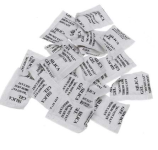- Messages
- 1,890
- Name
- Joel
- Edit My Images
- No
Ok so I went out last Friday and my Camera got a bit wet. I came home and left it to dry on my table. Went out with it yesterday on Sunday and before doing so checked battery levels, it came on so thought it was fine. Got to the Peak District, turned off - even though battery was more than 50 percent. Changed battery, came back on, assumed it was the battery. Then stayed on for a few minutes before turning off.
A few more times on and off and then stayed off. Left in my camera bag over night and checked this morning and it turned on.
So what should I do, obviously hoping it's ok, but should I try putting it in a sealed bag with rice for moisture absorbency or is it beyond that?
A few more times on and off and then stayed off. Left in my camera bag over night and checked this morning and it turned on.
So what should I do, obviously hoping it's ok, but should I try putting it in a sealed bag with rice for moisture absorbency or is it beyond that?



